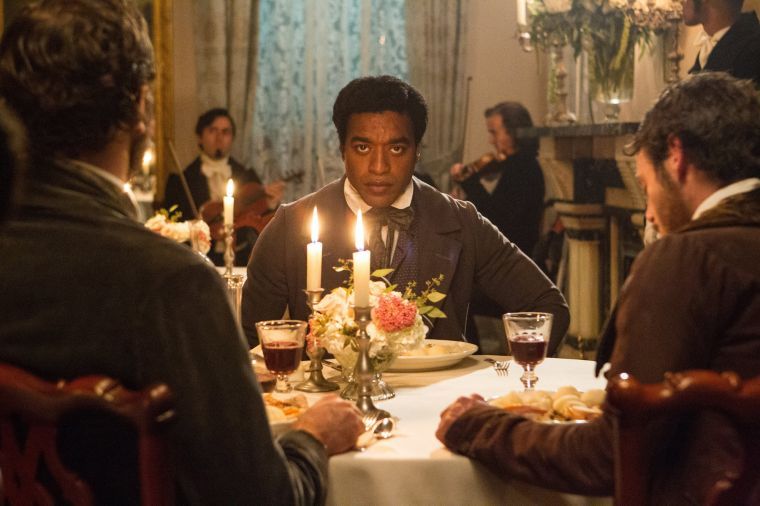MOVIE REVIEW: Emotions run wild in bold truth of ‘12 Years a Slave’
November 13, 2013
Director Steven McQueen’s film “12 Years a Slave” illustrates a rarely told truth about slavery in the United States.
Unlike the recently released movie “Django Unchained,” there is not really any forced humor throughout this film. Instead “12 Years a Slave” delivers a more intense image of the pure evil and human brutality that permanently stained America’s past, thus allowing viewers to experience a period of time that is often reduced as distant.
McQueen played on moviegoer’s emotion more than anything throughout the film.
In the film, McQueen tells the true story of Solomon Northrup, vividly played by Chiwetel Ejiofor (“Children of Men,” “American Gangster,” “2012,” “Salt”).
After receiving a glimpse of Solomon already immersed in slave work, McQueen makes great use of a flashback and allows viewers to see the musically-gifted Solomon as a free man living in Saratoga, N.Y. with his wife and two children. Suddenly, he finds himself kidnapped and sold into slavery in Louisiana, resulting in a long journey of unimaginable physical and mental anguish.
From the start, the movie draws viewers in with amazing cinematography and a very realistic portrayal of the brutality and hopelessness of slave life.
In no way does the film try to avoid gruesome details to spare the audiences comfort. The way in which horrific scenes were shot allows moviegoers to feel as if they are standing right there with the victims in the film.
Due to the rawness of the scenes throughout the movie, it is almost impossible not to get wrapped up emotionally and physically. Viewers are immersed in this pain within the first 20 minutes of the film.
Solomon wakes up and finds himself in chains and immediately suffers a beating with a wooden paddle at the hand of strangers, who insist he is a runaway slave and not a free man.
The angle in this scene was shot in a way that moviegoers can see Solomon’s anguish and bewilderment, all while seeing the crazed expressions on the man’s face who is beating him until the wooden paddle breaks into pieces.
Unfortunately, Solomon is not the only one in this tragic situation. He is advised by another kidnapping victim that the best thing he could do to survive is to never let anybody know he was a free man or that he could read and write. Solomon shows his resilience when he responds to this advice with “I don’t want to survive – I want to live.”
Despite the heaviness involved in playing the role, Ejiofor did an amazing job capturing the realness of it all without overacting. He revealed a talent that had not been seen to its full potential in his previous roles.
Aside from Ejiofor, there are other cast members who helped bring the film to life. Michael Fassbender (“Inglorious Basterds,” “X-Men First Class,” “Prometheus”) plays slave-owner Edwin Epps.
Throughout the movie, Fassbender depicts a psychotic alcoholic with grotesque and sexual deviant behavior towards a young slave by the name of Patsey played by Lupita Nyong’o. All the while, his shamelessly evil wife – played by Sarah Paulson – desperately tries to get rid of Patsey in horrific ways.
Benedict Cumberbatch (slave owner), Brad Pitt (Canadian worker), Paul Giamatti (slave trader) and Alfre Woodward (a “pampered” house slave) are some of the other popular actors and familiar faces featured in the cast. Though most of them opted for smaller roles, they all hold equal importance throughout the film, with mini stories of their own.
Rarely are moviegoers presented with such an honest, intimate movie that is completely raw in its telling of slavery. Without a doubt, this film is hard to watch, but very essential in its teaching, bound to go down as a classic.
Anisca Miles can be reached at [email protected]






















































































































